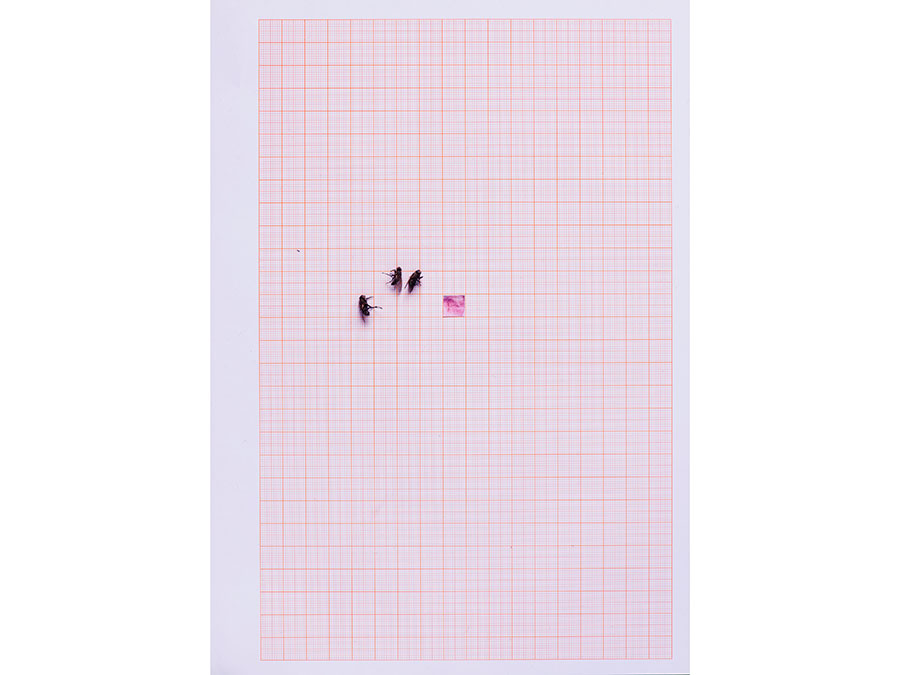BRISTNINGAR 09. April - 10. May 2015 - ARTendal
I mitt arbeide undersøker jeg fotografiets tvetydige egenskap av å være både virkelighet og fiksjon. Fotografiet holder fast verden, og gjør den tilgjengelig for oss i kraft av form. Samtidig er jeg bevisst på at den som holder kamera er den som forteller historien.
Bristningar er en utforskning av det fotografiske mediets grenser. Det er i selve brytningspunktet mellom ulike medier at jeg finner en nerve og en produktiv motsetning. Bristningar består av collage av forvrengte, sammensatte kropper og elementer av tredimensjonale gjenstander. Collage i grenselandet mellom skulptur og fotografi. Former som kolliderer. Den amputerte kroppen som har blitt satt sammen igjen, som en måte å gestalte og sammenføye en fragmentert identitet.
Hvor mye kan man ta bort uten å forsvinne? Hvor nær kan man gå før helheten glipper og nærheten blir til avstand?
I fotografiet forholder man seg ofte til det som allerede er. I Bristningar er prosessen motsatt, hvor utgangspunktet er et hvitt ark og billedelementene bygges opp fra grunnen. Jeg er fascinert av det taktile og arbeider fullstendig analogt. Jeg bruker utelukkende eget billedmateriale i collagene. Det gir meg en frihet i begrensningen og skaper en personlig realisme.
BRIST(NINGAR) {substantiv} (spricka, brytning, reva)
{substantiv} (anfall, utbrott, explosion)
{substantiv} (otillräcklighet, ofullkomlighet)
{substantiv} (defekt, lyte, skavank)
{alt} (frånvaron av)
—–
Katinka Goldberg er født i Stockholm i 1981, og har vært virksom i Oslo siden 2008. Hun er utdannet i Sverige og Frankrike, og har en BA i fotografi fra kunsthøyskolen i Edinburgh. Hennes første utgivelse Surfacing ble kåret til årets beste fotobok av Gerry Badger / Photoeye, og er inkludert i Martins Parrs The Photobook: A History VOL III. Goldberg har hatt flere utstillinger, både i Norge og internasjonalt; på fotofestivalen Circulation(s) i Paris, Fife Fotospace i Glenrothes, Scotland og på Melk galleri i Oslo, Norge. Hun har mottatt flere stipend, inkludert et toårig statlig arbeidsstipend.
Det pågående prosjektet BRISTNINGAR med fotografier av KATINKA GOLDBERG er andre del av en triologi som tematisk forholder seg til relasjoner, intimitet og avstand. Ikke bare relasjoner som en tematisk utforskning av mellommenneskelige forhold - den usynlige atmosfæren mellom mennesker, men også relasjoner i og mellom visuelle uttrykk.
Katalogtekst
UNDER THE SKIN
Gerry Badger
Beginning with Cubism, one of the most startling strategies of 20th century art was to break things apart visually, to fragment the wholeness of things. A favoured subject for this treatment was the human body.
There are of course a number of reasons why an artist might do this, Some are formal. The Cubists, for instance, maintained that it was a more ‘realistic’ way of depicting three dimensions in two. But there are also psychological reasons. In the century of psychoanalysis and alienation, the fragmented image could connote many things. For example, In the reconstructed dolls and collages of Hans Bellmer, the dismemberment of the body image is infinitely disquieting, suggesting the darkest and most transgressive fantasies, amongst other things.
And it should be said that, while many were not quite so extreme, much of this fragmentation and prestidigitation was the prerogative of male artists – from Pablo Picasso to Karel Tiege, from Man Ray to Raoul Ubac, from Salvidor Dali to Goerges Hugnet – and the bodies being deconstructed were largely female.
Fragmentation, however, need not always have negative implications. We take things apart in order to reassemble, in a better fashion. So Cubism and associated strategies might provide a visual metaphor for psychic as well as material analysis.
This is the case with Katinka Goldberg. Her ongoing series, Bristningar (Rupture), is the middle part of a trilogy of works, in which she is ‘exploring the tension between closeness and distance‘, trying, no less, to locate herself both within herself and within the world. The trilogy began with her book, Surfacing (2011), which examined the relationship between herself and her mother, in a complex and highly poetic way. In Rupture, she is making collages, which, like Bellmer’s, deconstruct and reassemble the body, but do so with a very different aim, a healing rather than a destructive or pathological purpose. And also a process of add and subtracting, or rather, of adding in order to subtract.
‘I am trying to answer the question; how much can you take away of yourself without disappearing? How close can you get before the closeness becomes a distance?’
Her intentions are both formal and psychological. On one level, she is pushing at the medium’s boundaries, pushing beyond the versitic imperative of the camera and provoking a clash between photography, sculpture, and painting. On another, she is exploring different aspects of her psyche, using the same kind of allusive approach, but very different formal means to those deployed in Surfacing.
In Surfacing, it seemed to be a matter of exorcising demons, of trying to make peace with what seemed to be an obviously close (perhaps too close) and sometimes difficult relationship, a letting go perhaps. Rupture seems more of a reaching toward, not to her mother but to herself. By making fragmented collages from the human body (mostly her own) Goldberg would seem to be fashioning a visual metaphor, no less, for the process of psychoanalysis, tearing the soul apart, examining the pieces and the data, then reconstructing a more complete whole – that is to say, with all the psychological rupture and the nasty bits left out.
As she has explained, in these fragmented and highly abstract collages, Katinka Goldberg is utilizing ‘the amputated and then reconstructed body as a way to visualize a fragmented identity that has been mended. Forming a reconstruction of oneself to be seen. Seeing as a way of belonging.’
Gerry Badger, 2015








